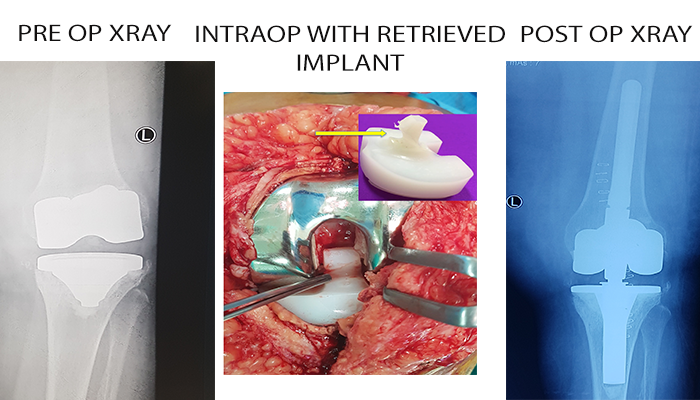Peri-Prosthetic Fracture after Total Knee Replacement
Eighty Years old female-presented wit alleged history of fall and complaints of Pain and inability to bear weight on Right leg. Patient had undergone bilateral Total Knee replacement in 2014. Patient was evaluated clinically, there was deformity in Right knee and attempted movements were painful. X-rays of knee and Pelvis were done and showed Supracondylar fracture of Right Femur just above total Knee Implant. Options of Fixation and revision surgery were explored and respective pros and cons considered. Patient was planned for Open reduction and internal fixation. Revision implants were kept as stand-by incase fracture was found to be comminuted and unfixable. Patient was taken up for surgery after PAC evaluation and Open reduction and stable internal fixation was achieved with locking plate. Postoperative period was uneventful. Knee was immobilized for period of 4 weeks and later gradual knee flexion was allowed. Gradual weight bearing was started after 2 months and patient was allowed to walk with walker. Three months after surgery, X-rays were done and Fracture showed good attempt at union. We were able to preserve the original knee prosthesis and stable knee along with good range of motion.
Disclaimer: Patient name and identity has been withheld. Picture are published with permission of the patient.





